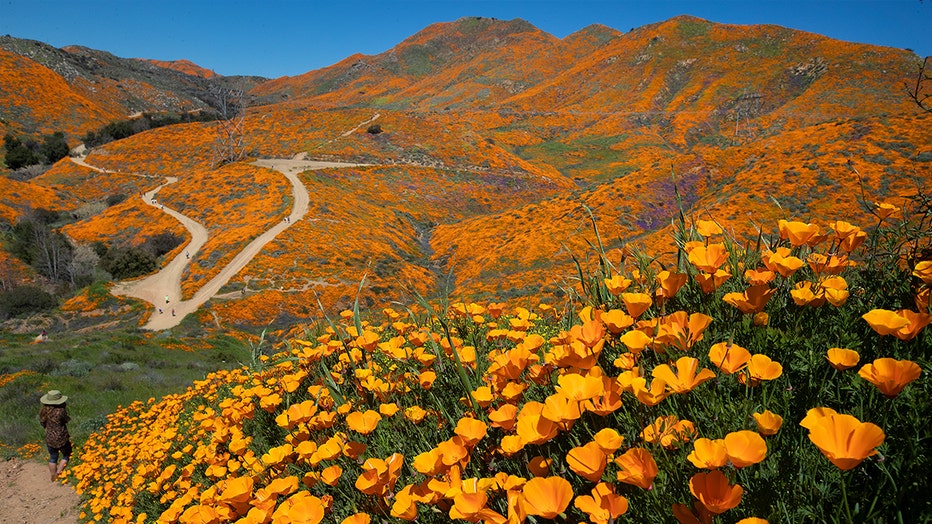Can we expect another super bloom in California in 2020?
(Mary Stringini / FOX 11)
For the past few years, spring in California has been extra spectacular — will hillsides blanketed with wildflowers. Now, people are wondering whether they can expect to see those same magnificent colors with another super bloom in 2020.
Short answer: It's very possible... but too early to say.
In some areas, conditions are lining up for what could be another amazing show. But the super bloom really depends on how much rain the state gets during its winter months. In order for the plants to blossom at the proportions that create a super bloom, February will need an ample amount of rain, according to flower experts.

LAKE ELSINORE, CA - MARCH 13: California Poppies are abundant as visitors take in the scenery of the Super Bloom, Lake Elsinore Poppy Fields in Walker Canyon after the city closed the area on March 13, 2019 in Lake Elsinore, California. (Photo by All (Getty Images)
RELATED: Rain brings 2nd California super bloom in 2 years
According to the 2020 almanac, some rain is forecasted in the Pacific Southwest between Feb.12-19 and then again between Feb. 25-29. Between Feb. 20-24, some mild showers are expected. But would that be enough to trigger another super bloom? We will have to wait and see!
If that rain comes, followed by sustained cooler weather, it could produce a bloom in March.

(Mary Stringini / FOX 11)
“All in all, it will be a good year in most places,” ecological consultant James Cornett told the Desert Sun. “We’re waiting to see if it becomes a great year.”
In 2017, California experienced its first super bloom in nearly a decade. In February 2017, downtown Los Angeles experienced 4.17 inches of rain and in 2019, the area got about 5.59 inches. Thanks to the above-average rainfall in the state in 2019, wildflowers canvassed the mountaintops and valleys once again. The potential for a super bloom in 2020 has yet to be determined — so for now, all we can do is hope for a bit of rain accompanied by cooler temperatures.

